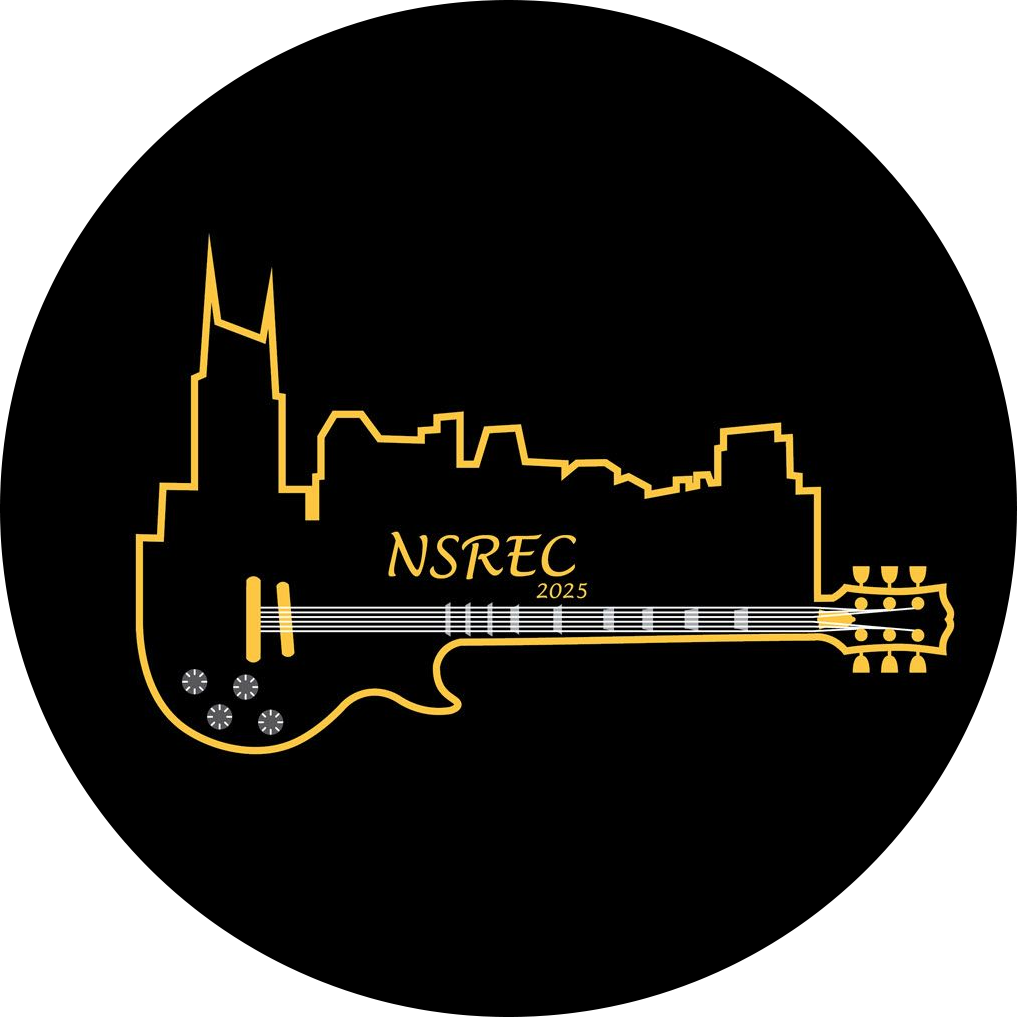2023 IEEE NSREC TECHNICAL PROGRAM SCHEDULE
SHERATON KANSAS CITY
EXHIBIT HALL B
FRIDAY, JULY 28, 2023
7:00 AM
Exhibit Hall A
Breakfast
INVITED TALK
8:30 AM – 9:30 AM
Exhibit Hall B
Kansas City National Security Campus Through the Decades
John Jungk, Ph.D., Chief Technology Officer, Honeywell Federal Manufacturing & Technologies, Kansas City, Missouri
The Kansas City National Security Campus (KCNSC) is a multi-mission engineering and manufacturing enterprise delivering trusted national security products and government services, producing 80% of the country’s non-nuclear components.
This presentation will provide a stroll through the history of the KCNSC, from its inception as the Kansas City Plant (KCP), including some pre-history of the campus in the 1920s, through the transition from the KCP to the current KCNSC in the 2010s. We’ll also look briefly at the core missions served by the talented people at KCNSC, how our core capabilities have evolved and changed over time, and how KCNSC fits within the Department of Energy / National Nuclear Security Administration and the broader Nuclear Security Enterprise.
Dr. Jungk is the Chief Technology Officer at Honeywell Federal Manufacturing & Technologies (FM&T), which manages and operates the Department of Energy’s KCNSC. With more than 6,000 employees in Kansas City and Albuquerque, the KCNSC provides diverse engineering, manufacturing and secure sourcing services for national security.
In his role, John is responsible for developing technology initiatives and providing direction in technology-related issues in support of the company’s goals and strategies. To drive that effort, he ensures that technology roadmaps are aligned with business strategy to efficiently and intentionally integrate science-based technologies into products and services. John is also responsible for engaging with customers, partners, commercial industry, and academic institutions to develop collaborations for mutual benefit. Finally, he directs and manages the leaders in the Centers of Excellence organization (which has responsibility for developing the strategies to advance and deploy the technologies necessary to achieve the site’s strategic goals), Advanced and Exploratory Systems Engineering, the Materials Engineering organization, and the Global Security Engineering organization.
John has authored/coauthored more than 18 peer reviewed journal articles and conference proceedings and is an Adjunct Professor at Missouri University of Science and Technology. He has a B.S. in Materials Science and Engineering from Washington State University, a Ph.D. in Materials Science and Engineering from the University of Minnesota, an MBA from Rockhurst University, and has more than 23 years of experience supporting of national security and defense research and development.
Honeywell Federal Manufacturing & Technologies, LLC operates the Kansas City National Security Campus for the United States Department of Energy / National Nuclear Security Administration under Contract Number DE-NA0002839.
SESSION H
HARDENING BY DESIGN
9:30 AM
SESSION INTRODUCTION
Chair: Yanran Chen, AMD, Inc.
H-1
9:35 AM
Estimation of Single-Event Upset and Performance using Back-Gate Bias in a 0.18 μm DSOI SRAM
Y. Wang1, S. Chen1, F. Liu1, B. Li1, J. Gao1, J. Li1, C. Wang1, L. Wang1, P. Cui1, S. Ma1, Y. Liao1, T. Wang2, J. Liu2, P. Zhao3, J. Liu3, C. Huang4, Z. Han1, T. Ye1
1. Institute of Microelectronics, Chinese Academy of Sciences, China
2. Space Environment Simulation Research Infrastructure (SESRI), Harbin Institute of Technology, China
3. Institute of Modern Physics, Chinese Academy of Sciences, China
4. College of Computer Science and Technology, National University of Defense Technology, China
By adjusting back-gate bias, 6T SRAM circuit has been experimentally demonstrated with extreme tolerance to SEU. A back-gate biasing strategy is proposed in DSOI SRAM circuits which significantly lowers SEU and power without performance loss.
H-2
9:50 AM
The Effect of Error Amplifiers on Analog Single-Event Transient in Two Low-Dropout Regulators on a 28 nm CMOS Technology
F. Shen1, J. Chen1, B. Liang1, Y. Chi1, Y. Wen1, and X. Wang2
1. College of Computer Science and Technology, National University of Defense Technology, China
2. College of Civil Engineering, Tongji University, China
SET sensitivity of two 28 nm CMOS low drop-out regulators with different error amplifier were studied by experiments and simulations. The regulator with rail-to-rail error amplifier has much worse response to SET.
SESSION I
SINGLE-EVENT EFFECTS: DEVICES AND INTEGRATED CIRCUITS
10:05 AM
SESSION INTRODUCTION
Chair: Francoise Bezerra, CNES
I-1
10:10 AM
Single-event effects in neutron-irradiated high-temperature DC superconducting quantum interference devices
E. Auden1, S. Wender1, K. Gunthoti1, P. Rech2
1. Los Alamos National Laboratory, USA
2. University of Trento, Italy
We present the first neutron-induced single-event effect experiment on a superconducting quantum interference device (SQUID). The measured neutron-induced electrical transients in SQUIDs provide insight to coherence loss in superconducting qubits exposed to ionizing radiation.
I-2
10:25 AM
LET and Voltage Dependence of Single-Event Burnout and Single-Event Leakage Current in High-Voltage SiC Power Devices
A. Sengupta1, D. Ball1, S. Islam1, A. Senarath1, A. Witulski1, R. Schrimpf1, K. Galloway1, E. Zhang1, M. Alles1, R. Reed1, M. Mccurdy1, J. Osheroff2, B. Jacob3, C. Hitchcock3, S. Goswami3, J. Hutson4
1. Vanderbilt University, USA
2. NASA Goddard Space Flight Center, USA
3. General Electric Global Research, USA
4. Lipscomb University, USA
Heavy-ion single-event burnout and leakage behavior of 1.2 kV and 3.3 kV silicon carbide power devices are analyzed based on radiation tests. The voltage capability of these devices affects the burnout and leakage thresholds differently.
10:40 AM – 11:10 AM
EXHIBIT HALL A
BREAK
I-3
11:10 AM
Effects of Collector Profile on the SET Response of 130-nm High-Speed and High-Breakdown SiGe HBTs
Z. Brumbach1, D. Nergui1, J. Teng1, Y. Mensah1, D. Sam1, A. Ildefonso2, A. Khachatrian2, D. Mcmorrow2, J. Cressler1
1. Georgia Institute of Technology, USA
2. U.S. Naval Research Laboratory, USA
SET responses of high-speed and high-breakdown SiGe HBT variants in the same technology platform were compared using laser pulses. The lower-performance, high-breakdown SiGe HBT showed a larger transient response, which is investigated using TCAD.
I-4
11:25 AM
Comparing Digital Modulation Schemes in RF Receivers for Bit Errors Induced by Single-Event Transients in the Low Noise Amplifier
D. Nergui1, J. Teng1, Z. Brumbach1, A. Ildefonso2, A. Khachatrian2, D. Mcmorrow2, J. Cressler1
1. Georgia Institute of Technology, USA
2. U.S. Naval Research Laboratory, USA
Standard digital modulation schemes are compared for receiver-level SEU sensitivity using pulsed laser. Frequency shift keying demonstrated a better SEU resilience than phase shift keying despite having a worse baseline (no SET) noise performance.
I-5
11:40 AM
SET-Induced Drop-out and Recovery of Cross-Coupled and Differential-Colpitts Microwave Oscillators Using SiGe HBTs
J. Teng1, Y. Mensah1, Z. Brumbach1, A. Ildefonso2, A. Khachatrian2, D. Mcmorrow2, J. Cressler1
1. Georgia Institute of Technology, USA
2. U.S. Naval Research Laboratory, USA
SET responses of cross-coupled and Colpitts LC oscillators are compared using laser-induced TPA and circuit simulations. The Colpitts oscillator demonstrated smaller amplitude disturbances and faster recovery time following SET-induced drop-out.
I-6
11:55 AM
SEU Cross-Sections at High Frequencies for RHBD Flip Flop Designs at the 5-nm Bulk FinFET Node
Y. Xiong1, N. Pieper1, Y. Qian1, S. Wodzro1, B. Narasimham2, R. Fung3, S. Wen3, B. Bhuva1
1. Vanderbilt University, USA
2. Broadcom, USA
3. Cisco Systems Inc., USA
Single-event upset cross-section trends for high frequency operation of RHBD FF designs are evaluated at the 5-nm bulk FinFET node. Results show reduced RHBD efficacy at the GHz range of frequencies.
12:10 PM – 12:15 PM
CONFERENCE CLOSING

